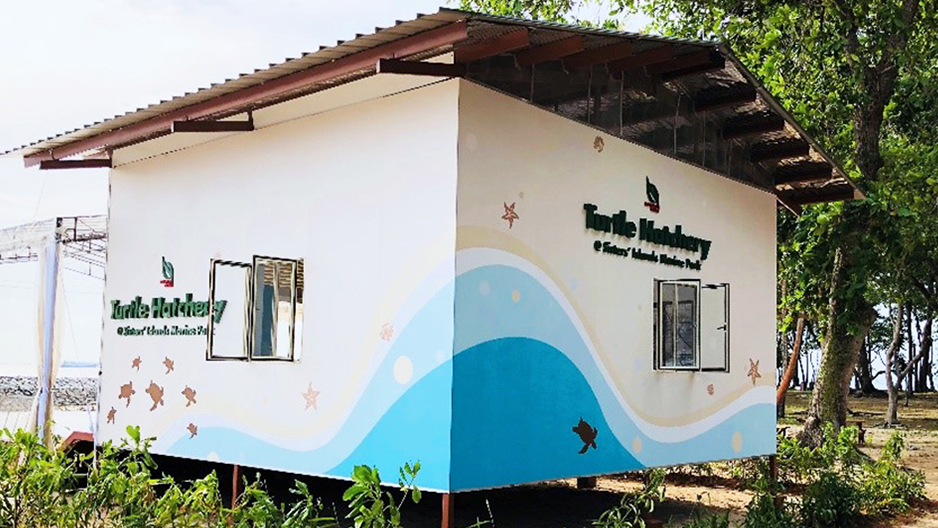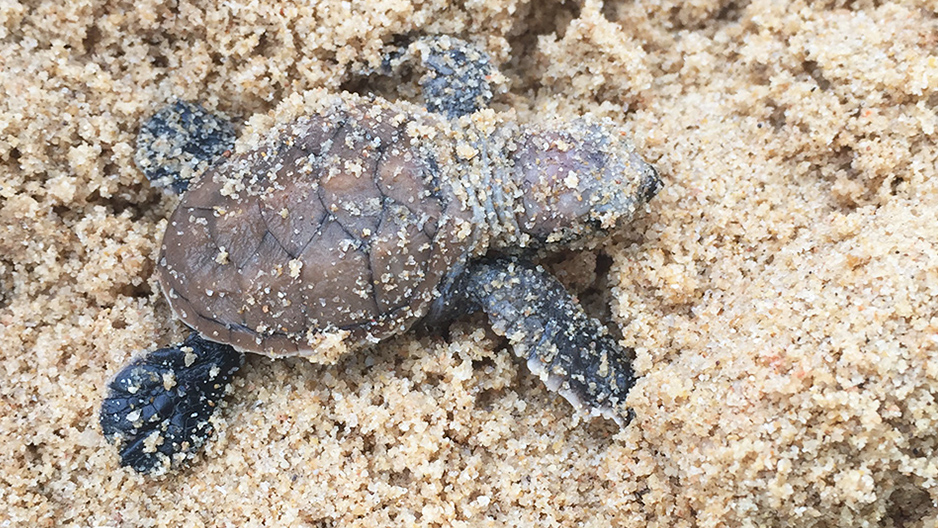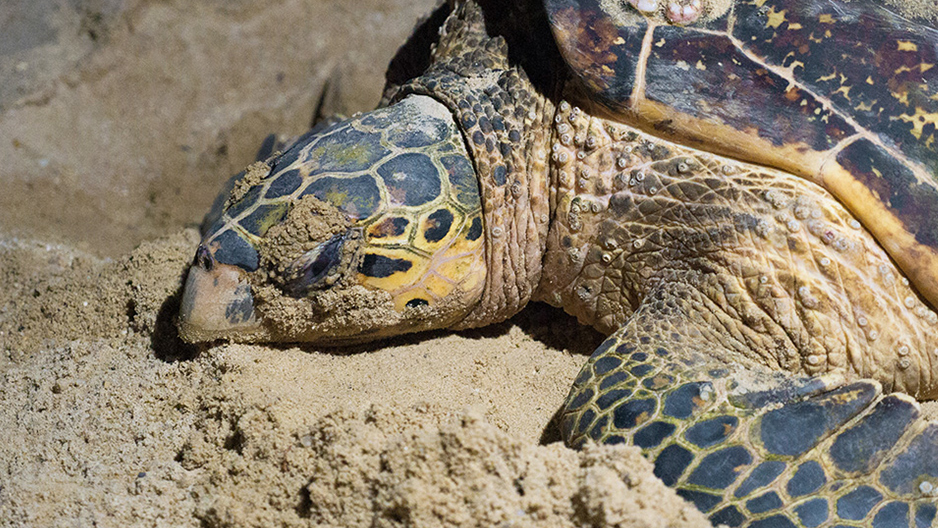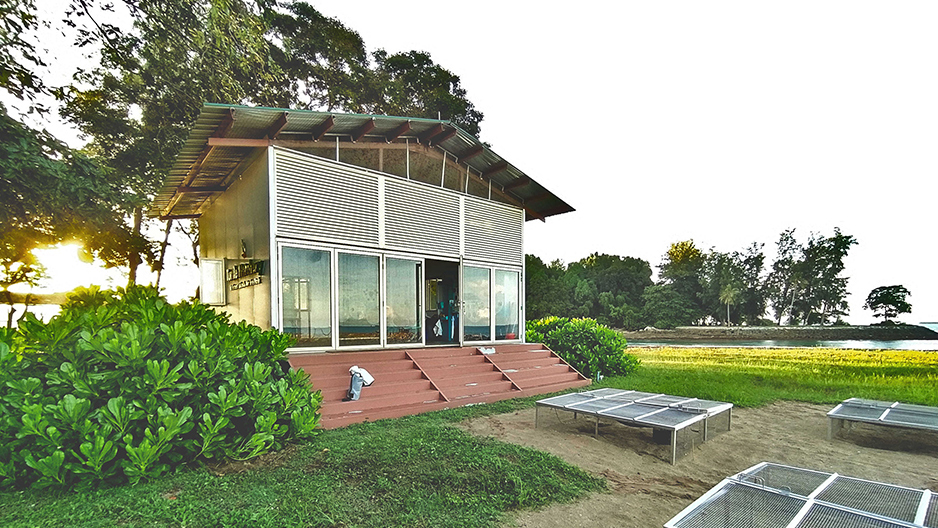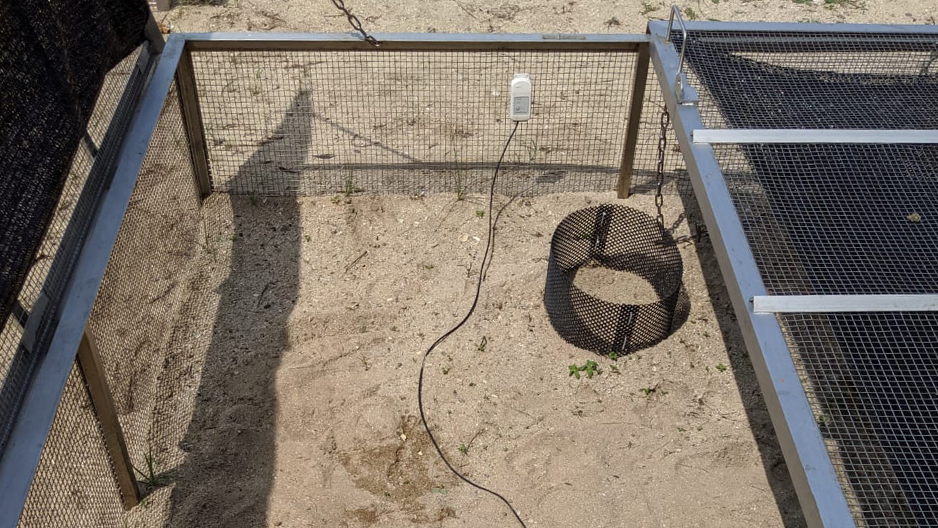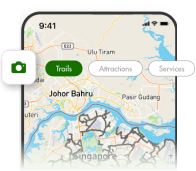How we protect turtle hatchlings
To improve the turtles' chances of survival, we assess nests found along Singapore's mainland beaches and the Southern Islands.
Nests at risk will be relocated to our hatchery, while others will be monitored to prevent disturbance.
- Nests at risk include locations with high human traffic or areas that are too close to the shoreline, too shallow, or at risk of predators.
- Nests that are not at risk will be left to incubate and hatch where they are. However, they will be monitored to protect them from human disturbance and predators.
Turtle hatchery
Our Small Sister's Island hatchery features sand pits with 3 metal cages:
- Rescued turtle eggs will be incubated and monitored within the cages until the hatchlings emerge.
- Each cage can hold up to 4 nests.
- Cages are partly buried in the sand to protect the eggs against predators such as monitor lizards.
- Cages can be fitted with shades to regulate nest temperature.
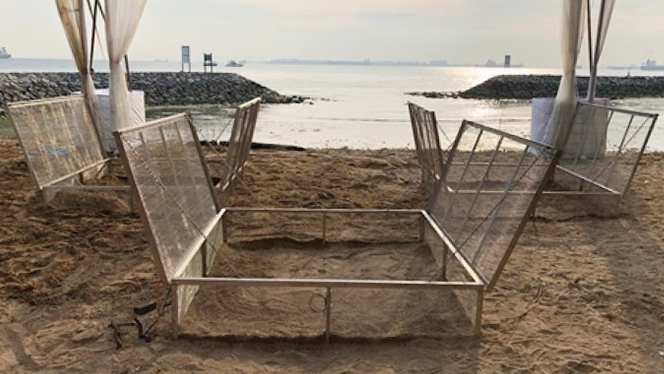
The hatchery has a turtle field station for educational or research programmes and volunteer training. Volunteers learn nest monitoring, survey and hatchery management skills at the station, which can hold up to 20 people.
Note
The turtle hatchery on Small Sister's Island is closed to public for conservation and research purposes.
Turtle encounters
Call us at 1800 471 7300 to report turtle sightings along the shores or in the water. You should also:
- Keep a safe distance from the turtles, their eggs and the tracks they have left.
- Refrain from shining lights at the turtles. Do not use flash photography.
How to contribute
- Join Biodiversity Beach Patrol, a citizen science initiative to involve the community in collecting information about sea turtles.
- If you are a diver, upload your photographs of turtles' side profiles to the SGBioAtlas mobile application to help us monitor and track them. Facial scale patterns in turtles are akin to fingerprints in humans, and do not change much over time.




